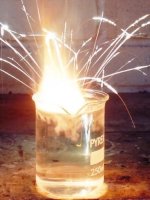Pancho
Reality Gazer
Hi there.
SWIM needs badly to reduce his DMT.
He can't buy reducing agents. Besides he needs just a little.
He thought about batterys, and searched the internet for some help.
He read about this source of Lithium and the procedure for getting it. Some pics he saw...
Dismantled Battery

Sticky Lithium (they say this is the Lithium, but SWIM has never seen some)

Well, the questions about this procedure: Does it look fine to you? Would you use this "Lithium"? or you think it is not...
And some questions about the reducing procedure: How to proceed? Just dissolving DMT in acidic Lithium water?
SWIM just need some advise from more experienced fellows for feel more selfconfident before trying it.
Please help with your opinion :d Thanks
SWIM needs badly to reduce his DMT.
He can't buy reducing agents. Besides he needs just a little.
He thought about batterys, and searched the internet for some help.
He read about this source of Lithium and the procedure for getting it. Some pics he saw...
Dismantled Battery

Sticky Lithium (they say this is the Lithium, but SWIM has never seen some)

Well, the questions about this procedure: Does it look fine to you? Would you use this "Lithium"? or you think it is not...
And some questions about the reducing procedure: How to proceed? Just dissolving DMT in acidic Lithium water?
SWIM just need some advise from more experienced fellows for feel more selfconfident before trying it.
Please help with your opinion :d Thanks


